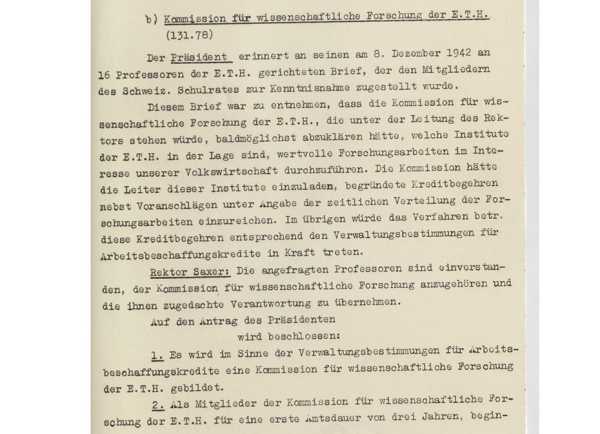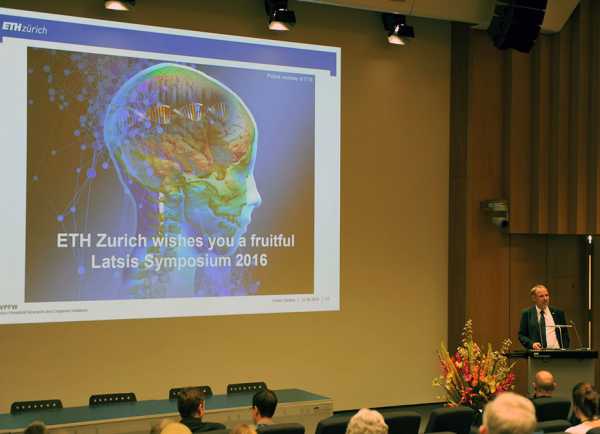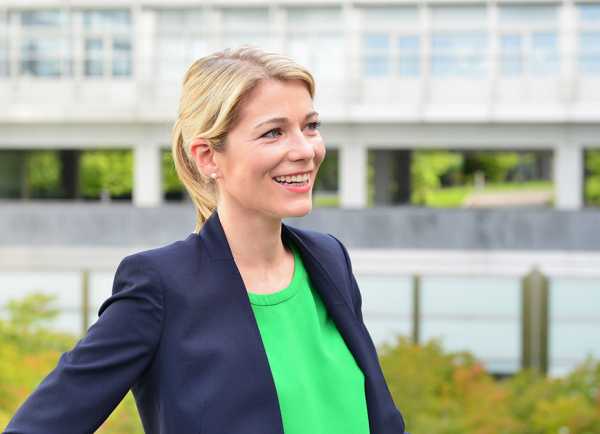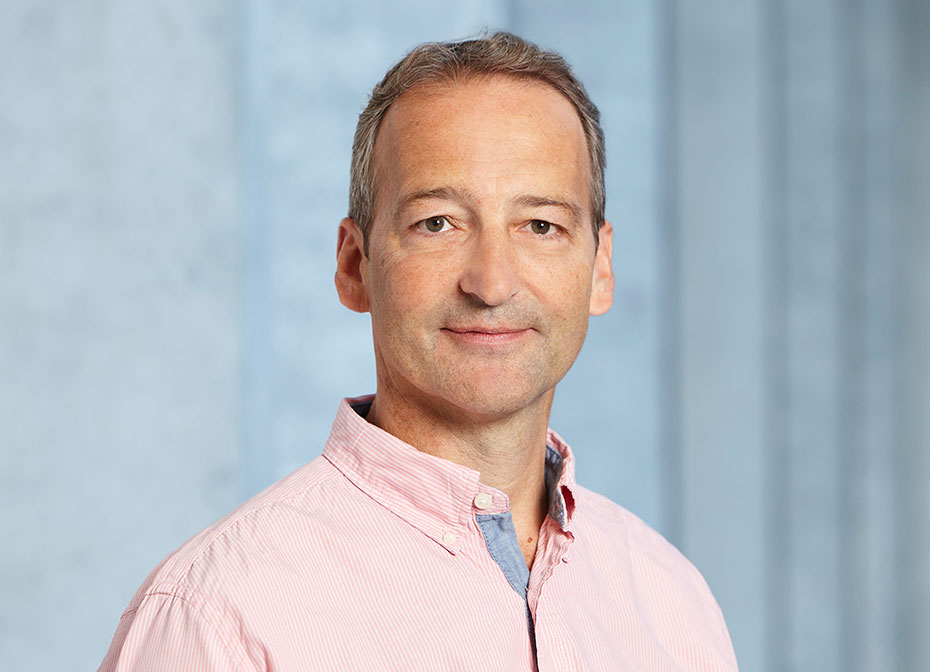“It’s like watching the Barcelona under-19s play”
At ETH Zurich, the Research Commission promotes young talents at the beginning of their careers as well as projects that open up new scientific horizons. Today this Commission is celebrating its 75th anniversary. Uwe Sauer, President of the Commission, explains how it is going to proceed.
What type of research does ETH Zurich’s Research Commission fund?
Uwe Sauer: We offer funds for fundamental research in all ETH Zurich’s disciplines, and in particular for collaboration within and between disciplines. Our funding considers natural sciences alongside engineering and social sciences, and it encompasses application as much as methodological development and basic research. Our aim is to open doors for original research ideas that may become new research fields in the long term.
Can you give us an example?
In nanotechnology, there are currently many applications that are of interest to material sciences, chemistry and biology. We have recently funded project applications in this area that aim to test ways of implementing this technology meaningfully. For this type of start-up financing, we have the ETH Grants.
Apart from ETH Zurich, only the Max Planck Society has its own internal funding.
There are systematic and historical reasons behind that – when financial cutbacks were looming, ETH took decisions that pointed the way forward. The Executive Board and the professors were of the opinion that it would be better for research at ETH Zurich if the Research Commission were to allocate some of the funds on a competitive basis.
What significance does the Research Commission have for ETH Zurich?
Good basic set-up is one of the strengths of ETH Zurich. It is this that allows chairs to pursue their own research ideas autonomously. However, a large part of the basic set-up is required to maintain complex research equipment and technology, and to ensure competitive compensation for skilled scientific and administrative personnel. To complement this, our competitive funding gives researchers the opportunity to test new ideas and develop new lines of research. And that improves the overall quality of research at ETH Zurich.
Why is that?
If researchers receive start-up finance from the Research Commission at an early stage, they stand a good chance of succeeding with large funding organisations, such as the Swiss National Science Foundation (SNSF) and the European Research Council (ERC). That is particularly important for assistant professors and non-faculty scientific staff.
How does it support young researchers at the outset of their scientific careers?
For young researchers, attracting attention as an independent scientist is a major challenge. ETH Zurich aims to use innovation potential at every level. And so researchers among non-faculty scientific staff who are not attached to a chair can apply for competitive funding for their own research. We are almost the only institution to offer them this opportunity at the outset of their careers. The Research Commission thus contributes to career development and to the success of scientific talent.
Why is independence important for young researchers?
Because they have to develop their own research fields scientifically and they also have to publish – under their own names. Naturally, young researchers can launch their careers within a chair. Often, they lead groups that develop a new technology or investigate a topic important to the chair. However, financing from the Research Commission allows them to implement their research ideas in complete independence.
Do you fund non-faculty scientific staff across the board, or just the elite?
We fund cutting-edge research. So the elite, always. We assess all applications on the same scale of quality and originality for targeted start-up financing of new ideas. The jewel in our crown is the ETH Fellowship. These are fellowships in which outstanding, mostly foreign, postdoc students apply to implement their ideas at ETH. It is like watching the under-19s of FC Barcelona play and deciding who to select for the main team.
How does the Research Commission ensure that it really is funding the best and most original ideas?
Every application undergoes a multi-stage evaluation process. For the ETH Grants, we discuss the projects and related external expert reports, both in the specialist sub-commissions and in the plenary to identify the most original ideas. The various research fields at ETH are well represented in the plenary, and there it’s the argument that counts. The system functions well. For the ETH Fellowships, candidates come for an interview. This sorts the wheat from the chaff, because we can see who can argue with us on an equal footing and whose ideas really are creative and excellent.
Finally, the Research Commission has a window on the future, in a manner of speaking, with a view of emerging research trends. Do you see any particular trend?
It’s true, we really are very close to the current research hotspots. One of these concerns drone technology. From the applications, we can see that ETH Zurich is extremely strong in robotics and drones. Drone technology has advanced so far that it can be developed for a wide range of research tasks. For example, drones can be deployed to check the quality of infrastructure, such as bridges – or to monitor glaciers in polar regions.
75 years of ETH Zurich’s Research Commission
The story of the Research Commission began on 12 December 1942, when the School Council, the governing body of the university, decided to form a Commission for Scientific Research at E.T.H. Its first task was to define “which E.T.H. institutes are able to conduct valuable research work in the interests of the economy”. During the economic crisis of the 1970s, ETH Zurich decided to upgrade the commission and to make more funds available for promising, fixed-term research projects.
Sources:
- School Council Minutes 1942, session no, 8, 18 December 1942, item 137, page 359.
- ETHistory. The Research Commission. (website dated 4 April 2005, accessed on 12 December 2017, in German only)
History of the Research Commission










The key funding instruments
ETH Zurich’s Research Commission has a total budget of about CHF 20 million. This is distributed among various funding instruments, with some funding carried out on behalf of the Swiss National Science Foundation, such as the SNSF Fellowships, which began in 1952. In the last 20 years, it has awarded about 1,100 SNSF-funded fellowships for post-doctorate overseas placements. Quite a few of these fellows later found positions at ETH Zurich.
The most important of ETH’s own funding instruments are
- ETH Zurich Research Grants (ETH Grants) fund innovative and unconventional research projects at ETH Zurich.
- ETH Zurich Postdoctoral Fellowships (ETH Fellows) fund outstanding postdoc students from other universities (excluding ETH Zurich and the University of Zurich) with a two-year fellowship at ETH Zurich.
- ETH Zurich Career Seed Grants for Postdoctoral Researchers allow postdoc students at ETH Zurich to carry out small, independent research projects.


Comments
No comments yet